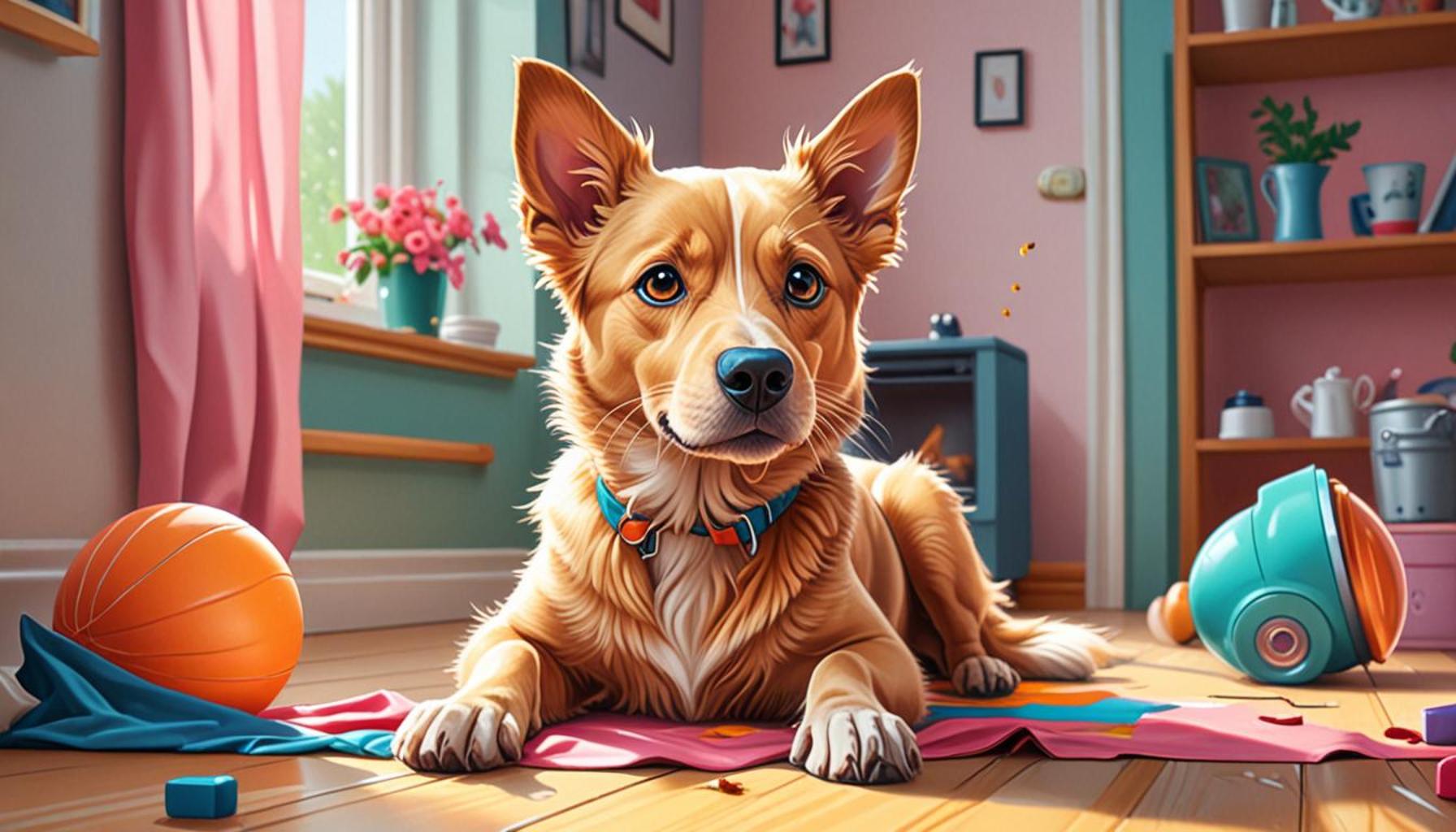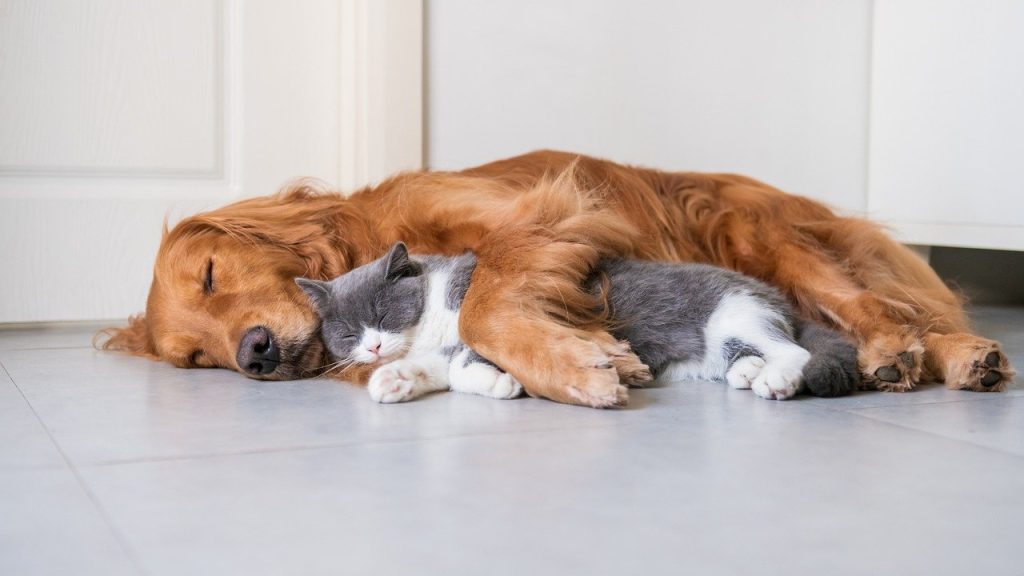How to Handle Separation Anxiety in Dogs and Cats

The Impact of Separation Anxiety on Pets and Their Owners
Separation anxiety is a prevalent issue that plagues many pet owners across the United States. It arises when dogs and cats develop a deep attachment to their humans, resulting in intense distress when they are left alone. This emotional turmoil can lead to a range of distressing behaviors, which can disrupt both the pet’s well-being and the owner’s daily life.
Common Signs of Separation Anxiety
Identifying the signs of separation anxiety is crucial in addressing this challenge. Pets often exhibit specific behaviors that are telltale signs of their discomfort. These symptoms may include:
- Excessive barking or meowing: Many pets will vocalize incessantly when they are left alone, which can be distressing not only for them but also for neighbors. This vocalization is a plea for attention and connection.
- Destructive behavior: Chewing on furniture, scratching doors, or digging at floors can result from their anxiety. For instance, a dog may chew on a couch out of sheer boredom and distress, causing significant damage to household items.
- Inappropriate elimination: Some pets may urinate or defecate indoors, even if they are otherwise house-trained. This behavior indicates a complete loss of control stemming from extreme anxiety when left alone.
These behaviors underline a pet’s struggle with feelings of loneliness and fear. Understanding what triggers these responses is vital for pet owners to effectively address and manage their pet’s anxiety.
Why Does It Happen?
There are numerous factors that can lead to the development of separation anxiety in pets, including:
- Change in routine: Major life changes such as moving to a new home, the loss of a family member, or even a different work schedule can unsettle a pet’s sense of security.
- Past experiences: Pets adopted from shelters may have experienced abandonment or trauma that leaves lasting psychological effects. For example, a rescue dog might have endured multiple homes before finding a permanent one, creating deep-seated fears of abandonment.
- Lack of socialization: Pets that have not been adequately socialized, particularly during their formative months, may have a difficult time adjusting to solitude. A young puppy raised in an environment with constant human interaction may find being alone particularly daunting.
By comprehensively understanding these underlying causes, pet owners can implement effective strategies to alleviate their pet’s anxiety. This not only contributes to the pet’s emotional well-being but also enhances their quality of life. Various approaches, such as gradual desensitization, interactive toys, and the introduction of calming aids, can help pets adapt to being alone for extended periods. Ultimately, fostering a supportive environment will encourage both pets and owners to thrive together.

DON’T MISS: Click here to learn more about what to keep out of your pet’s diet
Strategies to Manage Separation Anxiety in Pets
When faced with the challenge of separation anxiety in pets, identifying effective coping strategies is crucial for restoring peace and balance in both pets’ and owners’ lives. The approach to managing this condition often requires a combination of behavioral training techniques and environmental adjustments. Here are several strategies that pet owners can implement to help alleviate their furry companions’ anxiety:
Gradual Desensitization
One of the most prevalent methods for addressing separation anxiety is through gradual desensitization. This process involves helping pets acclimate to being alone for short periods before gradually extending the duration. Here’s how to implement this technique effectively:
- Start Small: Begin by leaving your pet alone for just a few minutes. Ensure they are in a safe and comfortable area before you leave.
- Increase Duration: As your pet becomes accustomed to shorter absences, gradually extend the time spent away. This can be done in increments of five to ten minutes, assessing your pet’s comfort at each stage.
- Exit and Entry Cues: Make your departures and arrivals low-key to avoid emphasizing the act of leaving or returning. This helps reduce the anxiety that can come with the anticipation of a separation.
This step-by-step process is instrumental in helping pets develop a sense of security about being alone, thereby reducing their overall anxiety during absences.
Interactive Toys and Enrichment
Another effective approach in managing separation anxiety is the use of interactive toys and mental stimulation. Keeping pets engaged can significantly aid in occupying their minds during a pet owner’s absence. Consider the following:
- Puzzle Feeders: These toys require pets to solve a problem to access food or treats, providing both mental enragement and a distraction from their anxiety.
- Chew Toys: Long-lasting chew toys can keep pets busy as they alleviate boredom, while also promoting dental health.
- Rotating Toys: To keep their interest piqued, rotate pets’ toys frequently. Introducing “new” items can revitalize their interest and occupy their time.
Both interactive toys and an enriched environment can create a more stimulating atmosphere, allowing pets to remain occupied while providing comfort to anxious minds.
Calming Aids
In addition to behavioral strategies, pet owners may also consider using calming aids to alleviate anxiety. Options include:
- Calming treats or supplements: Special formulations containing ingredients like chamomile, valerian root, or L-theanine can promote a state of relaxation.
- Thundershirts: These vests provide gentle pressure that can help soothe anxious pets during stressful situations.
- Essential oils: Certain scents, such as lavender, have calming properties. However, it’s crucial to ensure that any oil used is safe for pets.
By utilizing these strategies, pet owners can create an environment that fosters comfort and reduces anxiety for their beloved dogs and cats. Each pet is unique, so it may take some time to discover what works best for your furry friend. Ultimately, patience, consistency, and understanding are key components in successfully managing separation anxiety.
| Category | Description |
|---|---|
| Desensitization Techniques | Gradually increase absence periods to help pets adapt. |
| Interactive Toys | Provide stimulation that distracts pets during your absence. |
| Comfort Items | Familiar items like blankets can offer security. |
| Dose of Exercise | A tired pet is generally a calmer pet; exercise helps reduce anxiety levels. |
When addressing separation anxiety in dogs and cats, implementing desensitization techniques is key. By gradually increasing the duration of your absence, pets slowly learn that being left alone is temporary, relieving their anxiety. Also, providing interactive toys offers a form of distraction, engaging their minds and keeping them occupied during your time away. Furthermore, familiar comfort items, such as blankets or toys, can help soothe your pets, making them feel secure in your absence.Regular doses of exercise can significantly mitigate anxiety. Engaging your pet in physical activities before leaving allows them to expend surplus energy, reducing restlessness and stress. Understanding these methods can empower pet owners to create a more relaxed environment for their beloved companions.
DISCOVER MORE: Click here for insights on when supplements are necessary
Building a Supportive Environment
Creating a supportive environment for your pets is essential in managing separation anxiety effectively. This can involve both physical adjustments to their surroundings and emotional reinforcement from their owners. A comforting and secure environment can help pets feel more at ease when alone.
Safe Spaces
Establishing a dedicated safe space for your pets can significantly reduce their anxiety. This area should be quiet, cozy, and filled with familiar smells and objects. Here are some tips to create a sanctuary:
- Cozy Bedding: Provide a comfortable dog bed or cat tree that gives them a sense of security. This cozy spot allows them to retreat when feeling anxious.
- Familiar Scents: Include personal items like a worn t-shirt or blanket that carries your scent. The familiarity can offer significant comfort during times of separation.
- Toys and Chews: Ensure their safe space includes their favorite toys and chew items to engage and distract them while you are away.
These small adjustments create a haven where your pets can feel safe and secure, ultimately easing their apprehension over being left alone.
Training for Independence
Another valuable technique in combating separation anxiety involves training for independence. Teaching your pets that solitude is normal can help them become more self-sufficient. Here are some effective training methods:
- Short departures: Practice leaving your pet in their safe space for brief periods while you stay in a different room. Gradually increase the duration, rewarding them for calm behavior during your absence.
- Encourage Alone Time: While at home, encourage your pets to spend time in their safe space without you. This fosters a sense of independence and helps them associate alone time with calm moments.
- Outdoor Adventures: Engage in activities where your pet must spend time away from you, like doggy daycare or playgroups. This exposure to temporary separations can help them adjust.
Training for independence not only aids in managing anxiety but also promotes self-confidence, helping your pets thrive even when apart from their owners.
Professional Help
In some cases, managing severe separation anxiety may require professional help. Various professionals can offer guidance tailored specifically to your pet’s needs. Here are some options:
- Veterinarians: Speak with your vet if your pet’s anxiety is particularly distressing. They can rule out medical issues and recommend suitable calming medications if necessary.
- Behaviorists and Trainers: A certified animal behaviorist or trainer experienced in anxiety can design personalized training programs that address your pet’s unique challenges.
- Pet Therapists: Just like human therapy, pet therapists can assist pets in coping with their emotional struggles via behavior modifications and enriching experiences.
Engaging with professionals can provide a well-rounded approach to managing separation anxiety, enhancing the quality of life for both pets and their owners.
By taking the initiative to implement these supportive strategies, pet owners can address their pets’ separation anxiety in a comprehensive manner. Each method works synergistically to foster independence and create a comforting environment, guiding anxious dogs and cats toward a calmer and more peaceful state when faced with separation.
DIVE DEEPER: Click here to learn more
Understanding and Addressing Separation Anxiety in Pets
Managing separation anxiety in dogs and cats is a multifaceted endeavor that requires dedication, patience, and a well-rounded approach. One effective strategy is to create a supportive environment. This can be achieved by establishing a designated space for your pet that is safe and comfortable, filled with familiar smells and comforting objects, such as favorite toys or your worn clothing. A cozy bed in a quiet corner can serve as an essential retreat, helping pets feel more secure when left alone. For instance, many pet owners have had success with products like pheromone diffusers, which replicate natural comforting scents, thereby reducing anxiety levels.
Another vital aspect of managing separation anxiety is focusing on independence training. This involves gradually accustoming your pet to spend time alone, starting with short durations and progressively increasing the time apart. The use of positive reinforcement, such as treats or affection, can encourage your pets to embrace their independence. Consider engaging in activities that promote mental stimulation, such as puzzle toys or interactive games, which can distract them during your absence.
Seeking Professional Help
For more persistent or severe cases, seeking professional help from veterinarians, animal behaviorists, or pet therapists may be necessary. These experts are trained to identify underlying issues, whether they stem from past traumas, medical conditions, or behavioral problems, and can suggest tailored treatment plans. Behavioral therapies often include techniques such as counter-conditioning and desensitization, which can significantly benefit pets struggling with separation anxiety.
The Emotional Bond
Ultimately, understanding and addressing separation anxiety is a journey that fosters stronger bonds between pets and their owners. By consistently applying these techniques and remaining attuned to your pet’s emotional needs, you can foster resilience and comfort in your absence. Engaging in regular check-ins, using calming music, or even leaving behind a new chew toy can make separations easier over time.
This compassionate approach not only enhances the quality of life for your furry friend but also enriches the experience of pet ownership. With patience and dedication, you and your companions can enjoy a more joyful and stress-free life together, making the adventures shared even more memorable.


